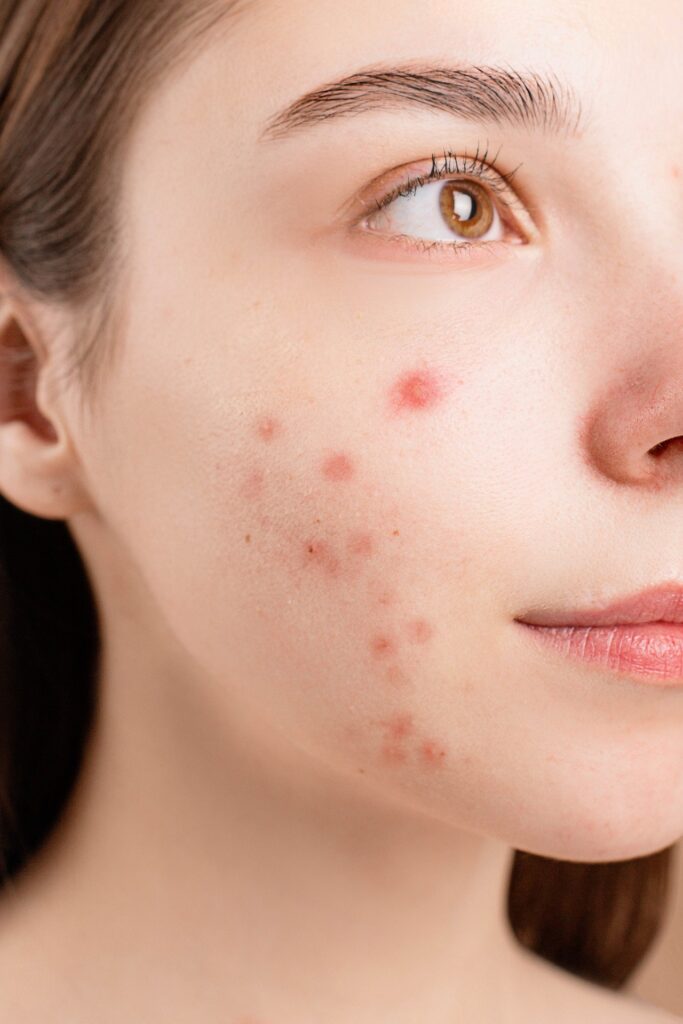The variety of skin spots
Skin spots vary in shape, size, color and location. They range from freckles and birthmarks to pigmentation. Some people are born with certain skin spots, while others may appear throughout life in response to sun exposure, genetic factors or aging.
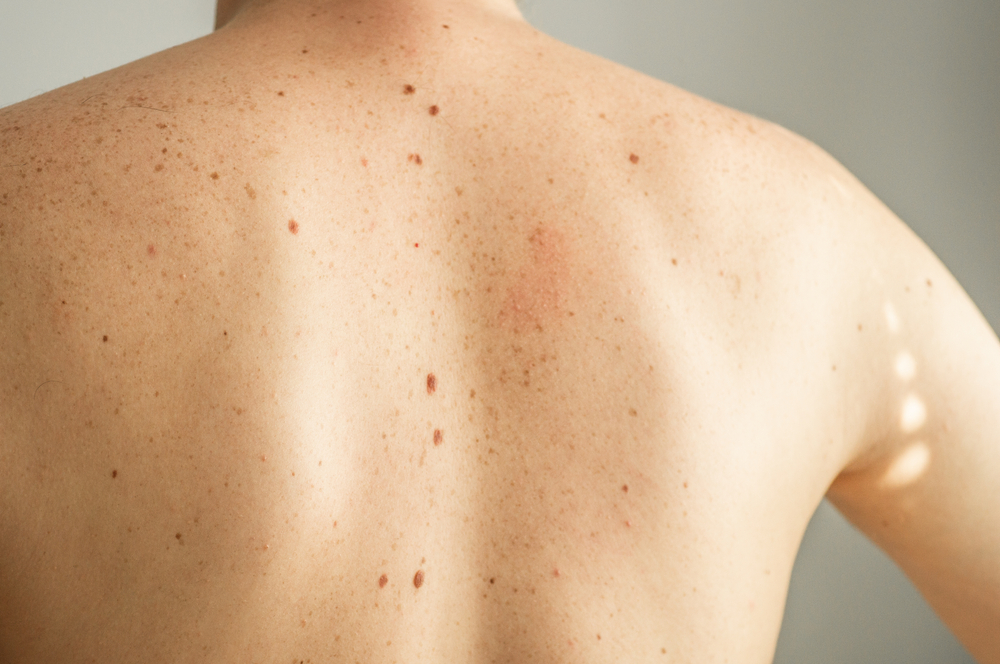
Moles: friend or nuisance?
One of the most well-known types of skin spots are birthmarks, also known as melanocytic naevi. These small colored spots are the result of an accumulation of pigment-producing cells (melanocytes) in the skin. Some birthmarks are present at birth, while others appear later in life. Most birthmarks are harmless, but it is important to notice changes in size, color, shape or texture, as this can be a sign of skin cancer.
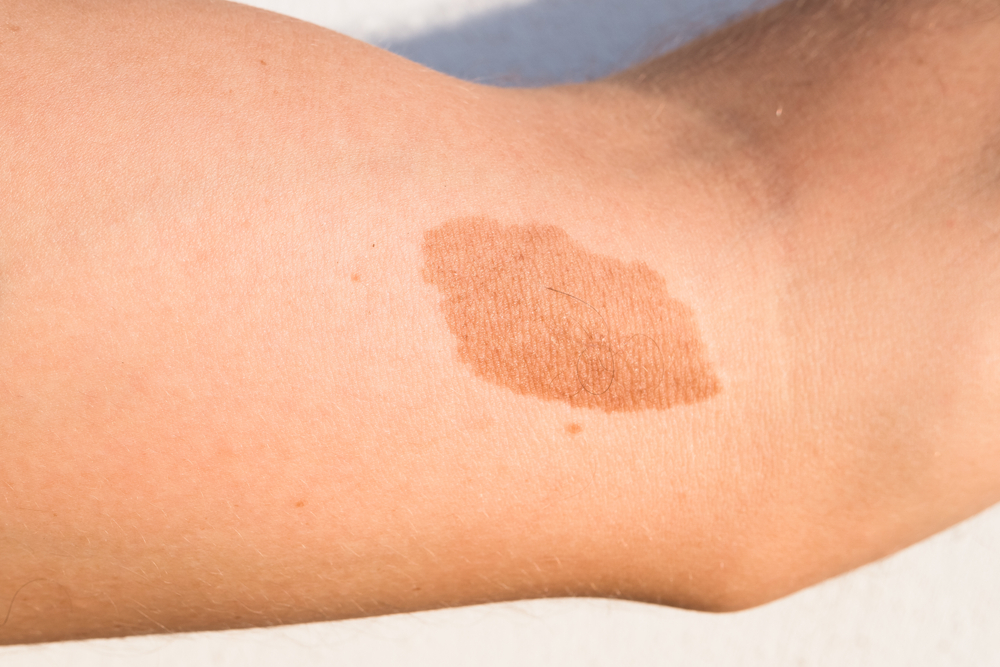
The danger of melanoma
Melanoma is an aggressive form of skin cancer that arises from melanocytes, the cells responsible for producing melanin. What begins as a harmless mole can develop into melanoma if there is uncontrolled growth of melanocytes. Melanoma is notorious for its ability to spread rapidly to other parts of the body if not detected and treated early.
In severe cases, you may suffer from an amelanotic melanoma that produces little to no melanin. As a result, these melanomas can look skin-colored, pink, red or even white, making them more difficult to recognize than melanomas that contain clearly visible pigment.
Early detection of skin spots saves lives
The importance of monitoring birthmarks and recognizing signs of possible melanoma development cannot be overemphasized. The ABCDE chart can be very helpful in this regard:
- Asymmetry
- Irregular edge
- Different colors
- Diameter (greater than 6 mm)
- Evolution (change in size, shape, color or texture)
If a mole meets one or more of these criteria, it is essential to consult a dermatologist immediately for further investigation.
Freckles and summer freckles
Freckles are cute little spots that occur mainly on parts of the skin exposed to the sun. They are caused by an accumulation of melanin in response to exposure to UV radiation. Freckles are generally harmless and are common in people with lighter skin tones.
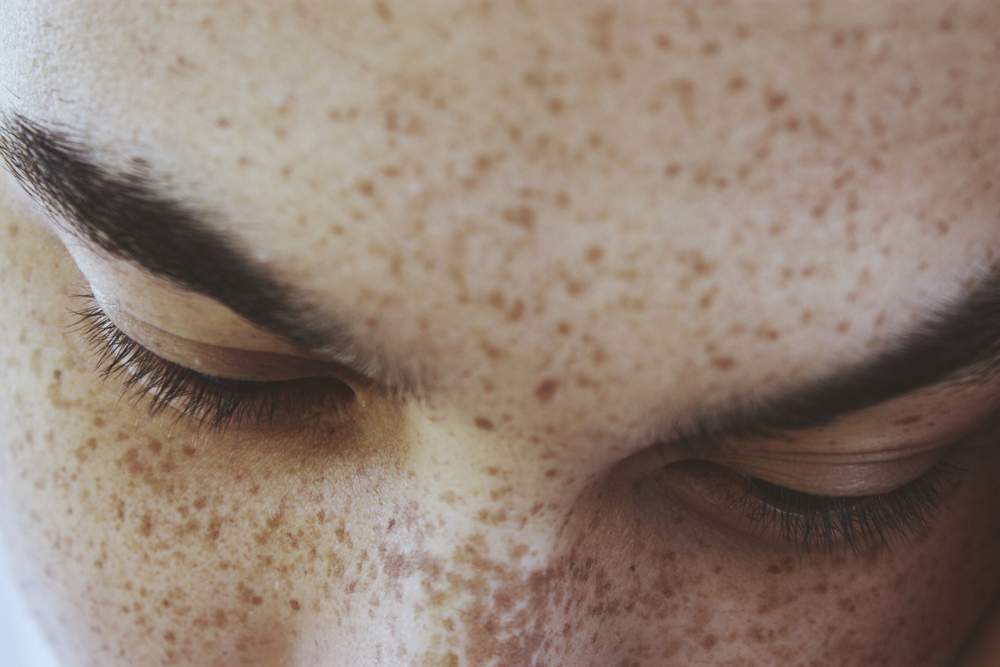
Age spots and sun damage
These types of spots, also called liver spots, are dark spots that often appear on the skin of older adults. They are usually caused by years of sun exposure and are a sign of skin damage. These spots are usually harmless, but they can be cosmetically disturbing. Protecting the skin from the sun and regular skin checks are essential to maintaining skin health.
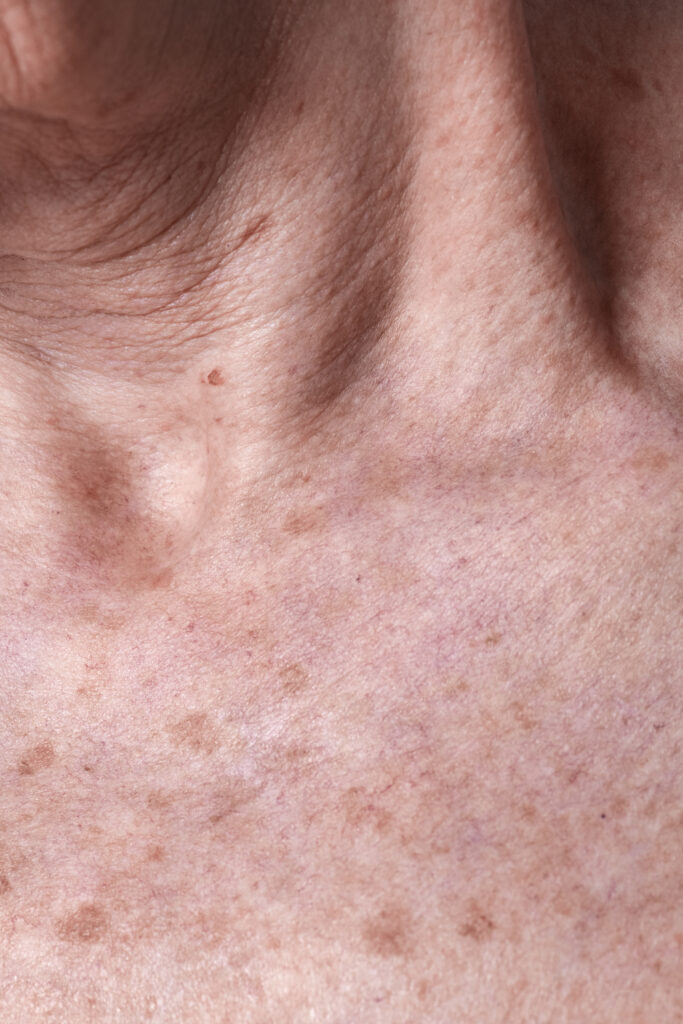
The sun can further cause actinic keratosis, also known as solar keratosis. This is a skin condition often associated with prolonged sun exposure and may indeed be linked to melanoma and other forms of skin cancer. Although no melanoma is involved here, both conditions can result from overexposure to ultraviolet (UV) radiation from the sun.

Light brown spots on skin: a subtle clue
In addition to the more prominent birthmarks and freckles, there are also light brown spots that are sometimes overlooked. These spots can vary in size and shape, and often have a lighter color than traditional birthmarks. They are sometimes dismissed as common skin discolorations, but it is essential to take these light brown spots seriously as well.
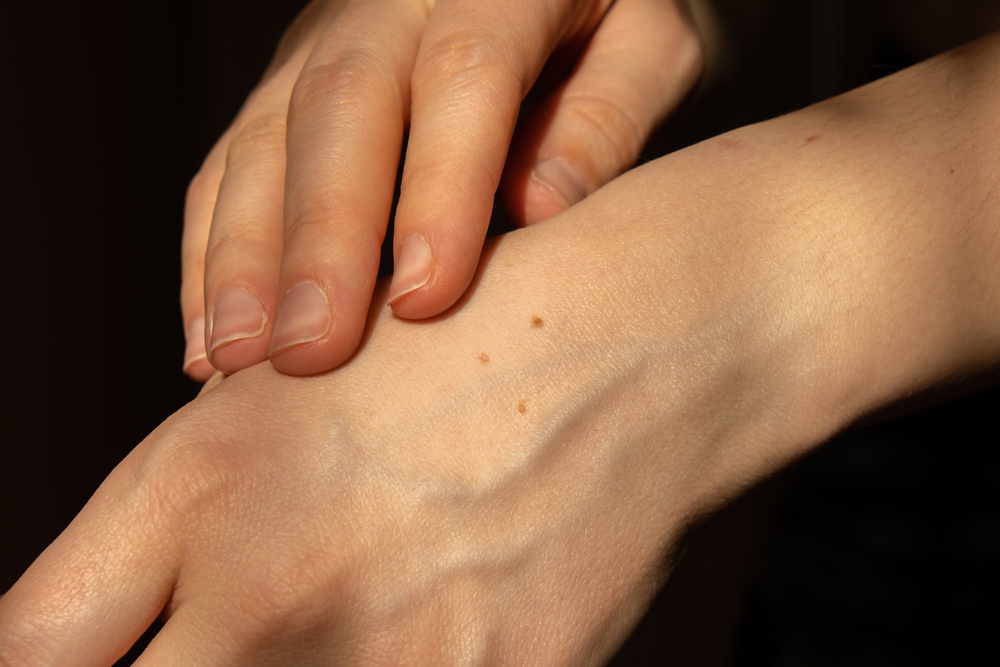
Protection and prevention
Besides understanding the different types of skin spots and their possible meanings, taking preventive measures for the health of your skin is paramount. Here are some tips to protect your skin and ensure a lifelong healthy glow:
Sun Protection: The sun can be beautiful, but the harmful effects of UV radiation cannot be ignored. Always wear a broad-spectrum sunscreen with an SPF of 30 or higher, even on cloudy days. Remember to reapply it regularly, especially after swimming or sweating.

Protective clothing: If you plan to be outside for extended periods of time, wear protective clothing such as wide-brimmed hats, long sleeves and sunglasses with UV protection.

Avoid excessive sun exposure: Limit your time in the sun, especially during peak hours between 10 a.m. and 4 p.m., when UV radiation is strongest.

Skin self-monitoring: Take regular time to examine your own skin. Be alert for changes in existing birthmarks, the appearance of new spots, or other suspicious areas.
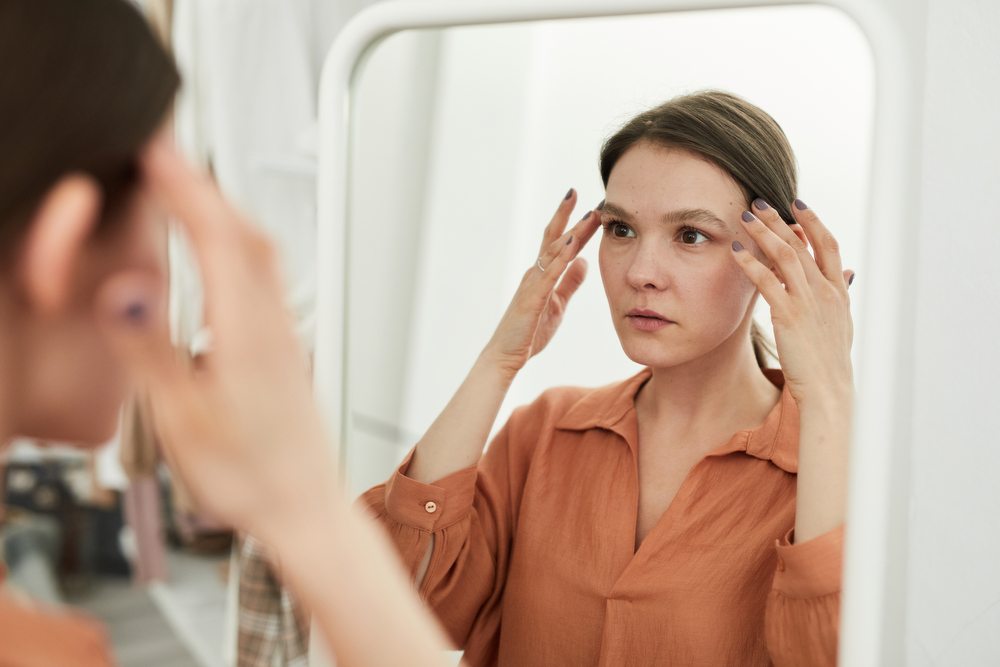
Annual dermatological checkups: Regular skin checkups by a dermatologist are vital, especially if you have a history of skin cancer, or if you notice changes in your skin that cause you concern.

Healthy lifestyle: A healthy lifestyle can also contribute to the health of your skin. Eat a balanced diet, stay hydrated and avoid smoking.

Awareness and Education: Stay up-to-date on information about skin cancer, different types of spots and how to protect yourself. Knowledge is the key to taking proactive steps for your skin health.

Consult an expert
If you have any doubt about a skin spot, consult a dermatologist. Dermatologists are medical experts on skin conditions and can determine the nature of a skin spot through visual inspection or, if necessary, a biopsy.
It is important to learn how to check your skin regularly and notice changes. By being mindful of our skin and paying attention to skin spots, we can play a proactive role in maintaining our overall health and well-being.
Table of Contents
Make an appointment
Do you have questions?
Make an appointment at our clinic.
See also
Carpe is happy to help you!
Carpe is your trusted partner in this journey to skin health. We are here to guide, inform and support you. Contact us today
contact
with us and discover how together, through a proper
treatment plan,
can work on maintaining healthy skin for the long term.


